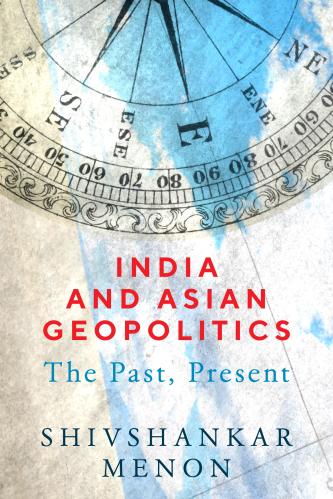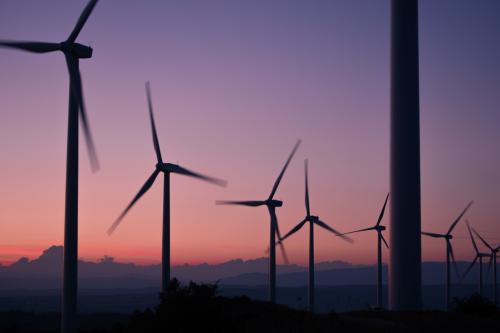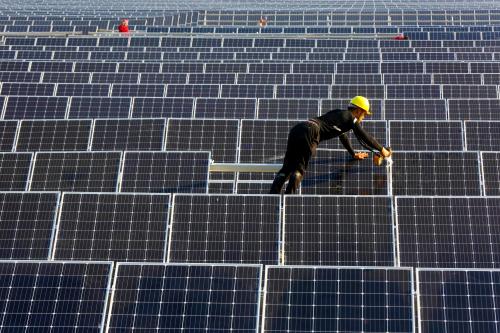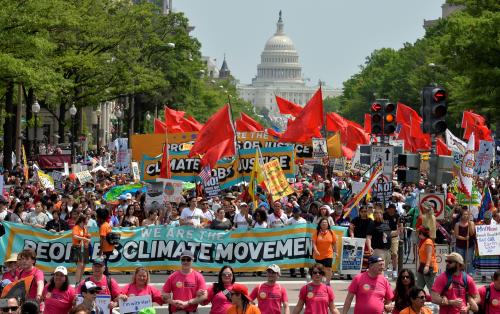The problem of global warming is a problem of global emissions, writes David Victor, and understanding what works and how international policy coordination can help bend emissions curves will be the central challenge for policymakers. With U.S. leadership, the Paris agreement could evolve further to become more effective. Absent that leadership, it is likely that other countries will step in to fill the vacuum. This piece originally appeared in The Washington Post.
What would a U.S. withdrawal from the Paris Agreement mean for the emissions that cause climate warming?
A growing array of evidence suggests that twists and turns at the federal level won’t automatically change how U.S. firms behave. The Trump administration may roll back U.S. regulations on clean power and on methane leaks from oil and gas operations, for example, but many states already have their rules in place, and the courts will likely halt some of Trump’s most ambitious rollbacks.
Indeed, the states such as California and New York that account for most of the nation’s economic growth—and thus most of the innovation and technology and policy—are the bluest politically and poised to do even more to cut emissions.
Here’s the good news: New analysis in a World Economic Forum (WEF) report argues that global efforts to promote clean energy have turned a corner. And the energy needed to produce a unit of economic output continues to drop.
Some of these patterns have been underway for decades—in particular, the decoupling between economic growth and the growth in raw energy consumption. But the Forum report details an important shift: This decoupling has occurred not just during periods of high prices for fossil fuels but also during lower periods.
Energy decoupling makes the diplomatic job of slowing global warming easier
Every major success in international environmental diplomacy can trace back to underlying technology and economic patterns demonstrating how to solve the problem at a reasonable cost. Cutting pollutants harmful to the ozone layer, for example, was possible in large part because the prospect of regulation unleashed innovation—and deployment of more benign substitutes.
Much of Europe is getting cleaner at a faster rate than the global average, but so are important emerging economies like Mexico, which is the midst of massive energy sector reforms that will favor cleaner and more efficient production. One of the chief goals of the Forum study, written with the consultancy Accenture, is to put a spotlight on the countries that have found ways to succeed economically while also being clean.
The Forum study documents patterns across all the major dimensions of the energy system, ranking countries in terms of their energy performance (see Figure 1). Consistently, the top performers have been small countries with a great deal of hydropower resources. Other countries like France and Korea, fare well with an energy mix that includes a large dose of nuclear power.
Figure 1: Energy Architecture Performance Index 2017
| Country | Rank |
|---|---|
| Switzerland | 1 |
| Norway | 2 |
| Sweden | 3 |
| Denmark | 4 |
| France | 5 |
| Austria | 6 |
| Spain | 7 |
| Colombia | 8 |
| New Zealand | 9 |
| Uruguay | 10 |
Increasingly, countries are improving their energy performance by relying more on renewables. Technology improvements have boosted energy gains in many countries. According to the WEF team, renewable power capacity spending increased modestly between 2011 and 2015, but this investment yielded 40 percent greater capacity additions—and generated one-third more power, thanks to better and cheaper technology. In most of the world, renewables still rely heavily on subsidies, so this continued improvement in performance will be essential lest the subsidy bill explode to politically intolerable levels.
The not-so-good news is that the pace at which the world is decoupling emissions from the economy remains much slower than the rate that will be needed to stop warming quickly. But the global emissions curve, which has been rising almost steadily ever since the industrial era, has begun to grow at a slower rate and might now be on the cusp of bending down.
Here’s why the Paris agreement matters
The policies that countries pledged in Paris—most of which largely reflected what governments had already planned—will help create transparency that can make it possible to coordinate policies to bend the curve even further.
These fundamental trends suggest that diplomats should be less focused on who is formally “in” and “out” in the Paris agreement. Instead, two other things matter much more:
1 Even with all these efforts and promises, the world is in for a lot of global warming. The rate of bending isn’t enough to stop warming at 2 degrees above preindustrial levels, a widely discussed goal that will soon need revision. Emissions have risen so high and for so long that there isn’t enough time to reverse course.
Most diplomats have looked at this fact and called on countries to radically increase their effort—including the rapid deployment of technologies that probably aren’t viable in the real world. More mitigation effort will be needed, but the bigger lesson for diplomats is to focus even more on how to help the most vulnerable societies adapt for the climate change that is all but inevitable.
2 International agreements need to be flexible and improve cooperation on the problems of climate change and energy-related policy challenges. The genius of the Paris agreement is that its bottom-up approach is designed to achieve exactly that high level of flexibility.
The Trump administration is seeking flexibility of its own, but it is hard to imagine a better framework, or one with the support of so many global companies. Given the flexibility of the Paris agreement, exiting this agreement would run exactly contrary to U.S. interests.
Rapid and complete decoupling of emissions from the economy won’t be easy, but many countries and firms are trying to achieve that outcome in many different ways. They are running experiments in policy and business, and the rest of the world will benefit if it learns the right lessons. This new WEF study can help put perspective on what’s working.
Developing nations offer important lessons
[W]hile the world’s top energy performers remain in the advanced industrialized world, there are important lessons coming from developing and emerging economies.
What are some key takeaways? Already, it is clear that while the world’s top energy performers remain in the advanced industrialized world, there are important lessons coming from developing and emerging economies. They include countries that have found ways to rationalize their consumption of coal, such as China. They include market-friendly reforms—such as in Mexico—to boost economic output along with cleaner energy systems. And they include countries that broke through political roadblocks to improving energy utilization, such as Uruguay.
With more than half of global emissions coming from developing and emerging economies, these will be important lessons to share. After all, the problem of global warming is a problem of global emissions. Understanding what works and how international policy coordination can help bend emissions curves will be the central challenge for policymakers.
In this process, the United States remains relevant, and with U.S. leadership the Paris agreement could evolve further to become more effective. Absent that leadership, it is likely that other countries will step in to fill the vacuum. Indeed, China is already poised to play that role in part because the flexibility of the Paris approach aligns well with how China would like to cooperate internationally on a wide range of topics. The U.S., perhaps, no longer fills the pivotal role it used to occupy.
The Brookings Institution is committed to quality, independence, and impact.
We are supported by a diverse array of funders. In line with our values and policies, each Brookings publication represents the sole views of its author(s).











Commentary
The world’s energy is getting cleaner (and cheaper)—but not quickly enough
March 25, 2017